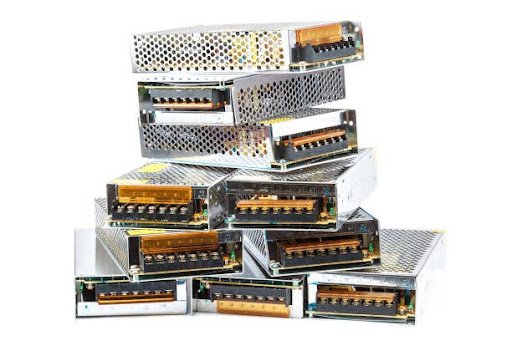Guide To Payment Tokenization For A Seamless Checkout Experience
If you take payments online, the checkout is the last chance for your business to make a sale. It can be annoying when a potential customer leaves the checkout process at the last minute, and getting them back can cost you a lot of money. Making the checkout process perfect is hard, but when everything goes well, it’s the heart of your business.
Payment tokenization is one of the biggest new things in payments, but a lot of people who aren’t in the industry still don’t know what it is. While you may not know it, as a merchant, customer, or both, you enjoy the many benefits of tokenisation every day.
Many online and digital wallet purchases are possible because of tokenisation. It makes one-click payments safer and faster, lowers fraud, and raises authorization rates, and it also lowers abandoned cart rates. In this article, we dive deep into how tokenisation makes the checkout page seamless.
What is Tokenisation in Payments?
Payment tokenization is the process of replacing sensitive information in a transaction, like the cardholder’s primary account number (PAN), with non-sensitive information, which is called a “token.”
These tokens don’t mean anything or have any value outside of the transaction. Instead, they’re just random numbers that are “references” to the tokenized payment data. These references let the data move through the networks it needs to finish the transaction without the risk of being stolen.
How tokenisation Works in Online Payments?
The tokenisation goes through a 5-step process to make sure that your payment goes through smoothly. The 5 steps are as follows:
Data Collection & tokenisation
A system or application first collects data and sensitive information, like when you start a payment or share medical records. After being collected, sensitive data goes through the tokenisation process, which replaces it with a randomly generated token. Most of the time, this token is just a random string of letters or symbols that doesn’t have any value on its own.
Data Storage
These tokens now represent the tokenized data, which is stored in the system’s database or sent over different networks. Tokens don’t mean anything to anyone who can get to them without also being able to get to the system that made them.
Secure Transmission
Tokens are the only things that are used when transactions or data transfers happen within the system or between different entities, like merchants and payment processors. The tokenisation system keeps the real sensitive data safe and sound.
De-tokenisation
The token is sent back to the tokenisation system to be de-tokenized when it reaches its destination. This lets the user see the original data. The system uses a mapping table or algorithm to find the sensitive information that goes with the token.
Usage and Security
After being de-tokenized, the sensitive data can be used for things like completing a transaction. This process makes sure that sensitive information is never seen or sent during normal use, which lowers the risk of data breaches.
Tokеnisation in India
The Reserve Bank of India (RBI) has allowed the tokenisation of debit, credit, and prepaid card transactions to protect customer data and encourage digital payments. The RBI has set rules for card tokenisation services that let you use tokens instead of real card information to pay online and without contact.
The guidelines of the Reserve Bank of India on payment tokenization are:
- tokenisation is something you can choose to do, but you need to give your explicit permission through an Additional Factor of Authentication (AFA).
- As of October 1, 2022, merchants are not allowed to keep your card information.
- tokenisation makes it easier to shop because you don’t have to enter your card details over and over again.
- You can tokеnise more than one card in one app and set daily and transaction limits.
- For security reasons, card companies can say no to tokenisation requests.
- You can stop tokens from working with certain merchants or all merchants through the companies that issue your cards. After that, you’ll have to enter your card information by hand.
Benefits of tokenisation for Checkout Experience
The process of tokenisation has no doubt improved the security of digital payments, but how has it actually made the checkout process far more seamless? There are a few ways it does that.
Faster checkouts
If you save your card on an online shopping platform, tokenisation ensures it’s stored securely. It can’t be accessed by anyone else. Thus, it enables faster checkouts.
Fewer declines
In network tokenisation, tokens remain valid even if card numbers change. This reduces the chances of transaction declines and ensures a smoother checkout process.
Reduced fraud risk
Tokenisation increases user trust by reducing fraud risk, which contributes to a frictionless and confident checkout experience.
Better compliance
Merchants don’t have to manage sensitive card data. This makes it easier for them to comply with RBI guidelines while delivering a secure and seamless customer experience.
Challenges and Considerations
Many challenges come with implementing payment tokenization, including:
Implementation Challenges
In order to guarantee that chargebacks can be reconciled with the card details stored on file, retailers must think about how to manage card details throughout implementation, as chargebacks usually take 30 to 60 days to process. To facilitate a more seamless changeover, shops could choose to run tokens alongside the card numbers for a certain amount of time.
Fraud Prevention Implications
To maintain a consistent customer experience and fraud detection, any existing lists of customers (negative or positive, associated with card numbers) should be tokenized.
While single-use tokens (new tokens for each card usage) can disrupt a retailer’s link analysis and velocity rule usage, multi-use tokens (a single token per card across all transactions) let retailers continue utilizing these crucial fraud prevention strategies effectively.
Conclusion
Payment tokenization is a great way to enhance security and improve customer experience. This is why it is important to help with a seamless experience with checkout pages, allowing for faster checkout times and better trust building.







